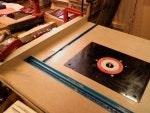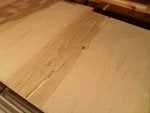This Dewalt 735 sits on the work bench taking up space I could use for something else, so I have decided to build a flip-top stand for it.
I have some cedar 2x4s that I cut to 3', jointed, thicknessed to 1.25" and ripped to 3.25". I plan on using M&T to put it all together. Finally, I have a project to do.
First 2 pics are of the inspiration for the project. Then the wood, and setting up of the tools for the M&Ts.
I have some cedar 2x4s that I cut to 3', jointed, thicknessed to 1.25" and ripped to 3.25". I plan on using M&T to put it all together. Finally, I have a project to do.
First 2 pics are of the inspiration for the project. Then the wood, and setting up of the tools for the M&Ts.









































